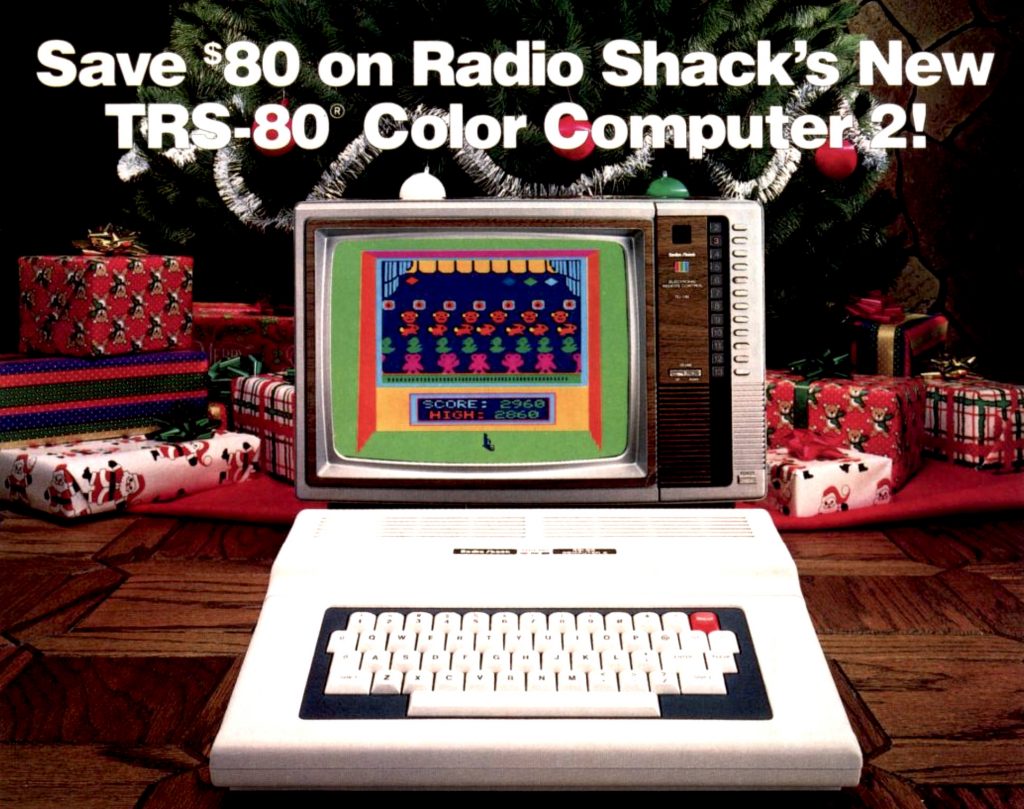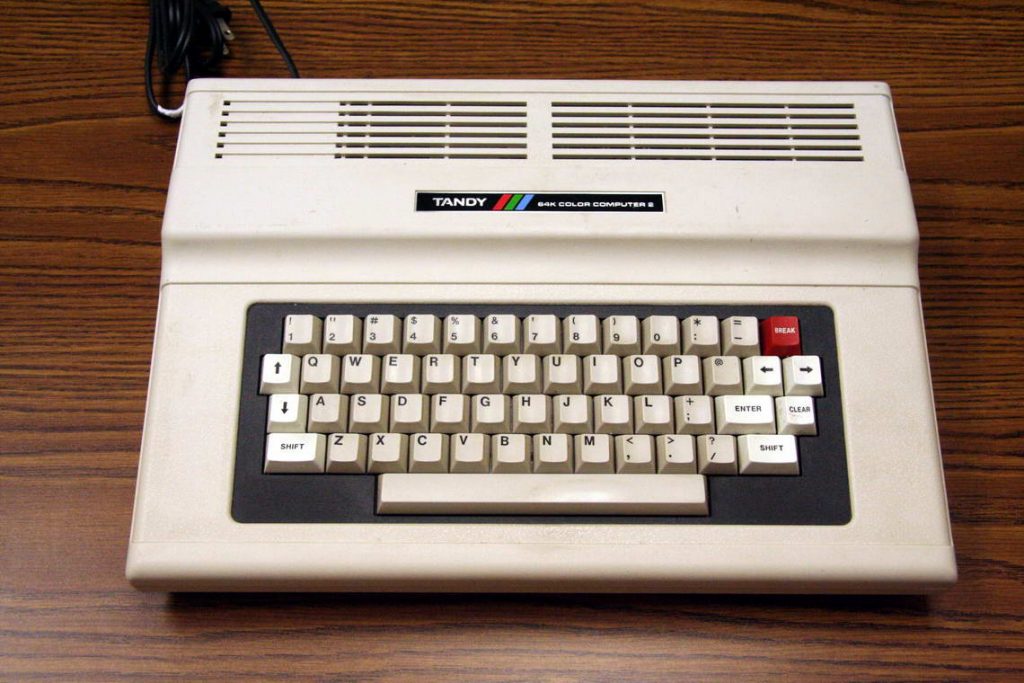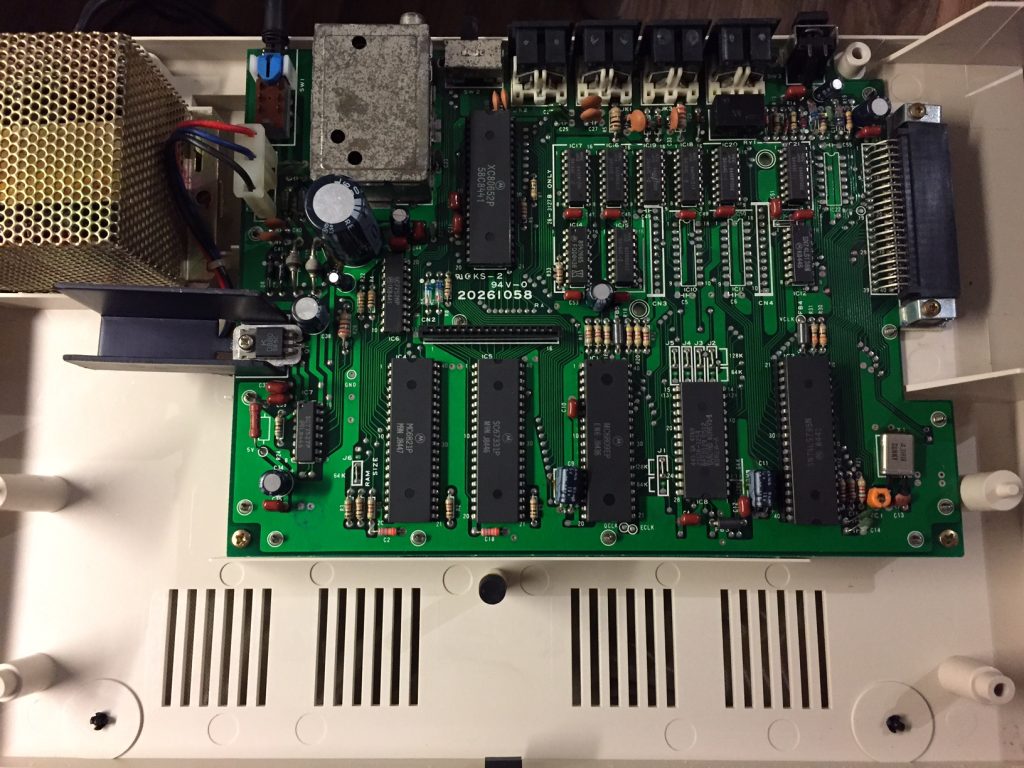The Radio Shack Color Computer was sort of a follow-up to the original TRS-80. It was designed more as a home computer to compete with the likes of the VIC-20 and Apple II originally. As the years went by, Radio Shack continued to upgrade the Color Computer line to keep up with the competition. However, the Color Computer never really got the third party support that Commodore, Apple and even Atari had.
The original Color Computer had quite an advanced 16-bit CPU for the time with the Motorola 6809E though it typically ran at a slow 0.895 MHz. However, it was quite limited in other ways. For instance, it only shipped with 4K of RAM which was even less than the VIC-20.
The Color Computer 2 was introduced in 1983 (the original Color Computer had been introduced in 1981). It featured a variety of improvements both in functionality and to reduce costs. Much of the circuitry was reduced to a handful of custom chips enabling the size of the unit to be reduced along with the power supply. This both reduced cost and increased reliability. This did break compatibility with some peripherals though.
Also, the keyboard was vastly improved. The original Color Computer had a chicklet style keyboard whereas the Color Computer 2 had a real keyboard. The RAM situation was improved as well. The Color Computer 2 was initially sold with 16K or 64K, both of which were big improvements over the original 4K model. There were also a few other improvements such as an upgraded BASIC, improved disk controller and enhanced VDG (allowing lowercase characters for instance). The Color Computer 2 was made from 1983 until 1986 when the Color Computer 3 was released.
The Color Computer line seemed to fit within a strange market segment. Though it was made for home and educational use, it was not well covered by computer magazines at the time. The vast majority of the software made for it was made by Radio Shack themselves as there was not a lot of third party support. Though supposedly supporting education, I never saw these in schools growing up. All I ever saw were Apple IIs. Commodore was also around though I think they were bigger in the education market in Canada than the U.S. My high school also had some TRS-80 Model IIIs and IVs which were already pretty old at the time but no Color Computers.
Having said that, the Color Computer was pretty powerful for its time and if you were a hobbyist or programmer perhaps not a bad choice. It’s just that if you were counting on lots of games or commercial software packages you were going to have a hard time. Radio Shack did support this line for a very long time though.







